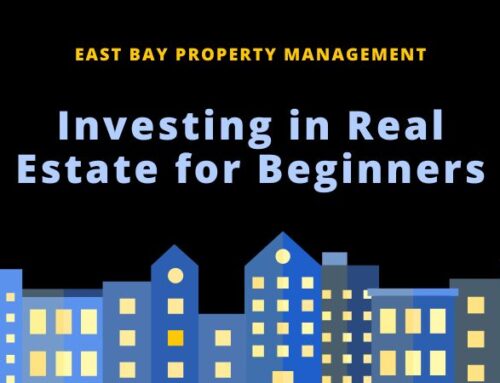Real estate investments can be an incredibly lucrative venture, even when interest rates are on the rise. This means that investors can earn a steady passive income while also growing their wealth over time.
One key aspect of a successful investment is financial planning. Real estate investors must know how to measure the profitability of their investments. To help you, the experts at East Bay Property Management have written this guide. Keep reading to discover the key real estate metrics every investor should know!
1. Capitalization Rate (Cap Rate)
The capitalization rate is a fundamental metric used to evaluate the potential return on an investment in real estate. This is calculated by dividing the property’s net operating income (NOI) by either its current market value or original purchase price. Typically, a higher cap rate indicates a higher potential return, but it’s important to consider other factors like risk and market conditions.
2. Cash-on-Cash Return (CoC)
This measures the annual pre-tax cash flow generated by the investment, in comparison to the amount of cash invested. To calculate the cash-on-cash return, investors must divide the annual cash flow by the total cash investment. This includes the down payment, closing costs, and any renovations made to the property. The CoC is typically used by investors to assess the potential return they can expect from their initial investment.

3. Gross Rent Multiplier (GRM)
The gross rent multiplier is a quick way to evaluate the profitability of a rental property. To calculate it, you must divide the property’s purchase price by its gross annual rental income. Typically, lower GRM values indicate potentially better investment opportunities.
You can use this metric even if you haven’t purchased or rented the property yet! You can determine a property’s potential annual rental income by researching the local market and seeing how much comparable properties in the area are asking for rent. This, along with the property’s purchase price, will allow you to calculate the potential GRM of a property so that you can determine whether it’s a profitable investment.
4. Appreciation Rate
Appreciation refers to the increase in the value of a property over time. Investors can calculate how much their investments have appreciated over the years by subtracting the initial purchase price from the current market value and dividing it by the original purchase price. The result is then multiplied by 100% to obtain a percentage.
A positive appreciation rate indicates an investment has been profitable over time. On the other hand, a negative appreciation indicates there have been major capital losses.
5. Average Annual Return
This metric calculates the average rate of return an investor can expect from an investment property over a specific period. The average annual return is usually expressed as a percentage and is calculated by dividing the total return by the number of years that have passed.

6. Operating Expense Ratio (OER)
There are many expenses associated with owning a property. Calculating the OER- allows investors to determine the overall profitability of their investment. This metric compares a property’s total operating expenses to its gross income. It’s calculated by dividing total operating expenses by the total rental income. Typically, a lower OER indicates more efficient management of expenses and strategic investment.
7. Cash Flow Margin
This metric is used to evaluate the profitability of an investment property. The cash flow margin assesses the percentage of revenue an investor will get after deducting operating expenses. To calculate the cash flow margin, divide net operating income by total revenue and multiply by 100 to express the result as a percentage. A higher cash flow margin will indicate better financial management.
8. Net Operating Income (NOI)
This metric represents the total income generated from a property over a year after deducting operating expenses but before deducting mortgage payments and income taxes. To calculate the net operating income, you must subtract the total operating expenses of managing the property from its total revenue. The higher the result, the better a property’s financial performance will be.
9. Vacancy Rates
Sometimes, real estate investors have to deal with vacant properties. Given that long periods of vacancies can be detrimental to the profitability of an investment, you must know how to measure the vacancy rates of your rental property.

The vacancy rate reflects the percentage of vacant units in a rental property over a specific period, typically a month or a year. To calculate this metric, you must divide the number of vacant units by the total number of units. Ideally, you’ll want to aim for lower vacancy rates, as this indicates higher occupancy and a more stable rental income.
10. Return on Investment (ROI)
This is one of the most important metrics real estate investors should know. ROI measures the overall profitability of an investment, as it considers both the initial investment and the return generated over time.
This is calculated by dividing the net profit or net operating income by the total investment cost and multiplying the result by 100. The resulting percentage can be used to compare the profitability of potential investments and to evaluate whether your current investing strategy requires any changes.
Bottom Line
Whether you’re a seasoned investor or just starting, you must familiarize yourself with many financial metrics and terms. Understanding how to calculate things such as the appreciation rate, cash-on-cash return, GRM, vacancy rates, and ROI is crucial for investors. After all, these metrics provide valuable insights into the financial performance, potential returns, and risks associated with investing in real estate
Do you need help determining the profitability of a real estate investment? Contact East Bay Property Management today! Our team is ready to help you navigate the complexities of the California real estate market.






